
NEWS FROM THE LATINO COMMUNITY IN ENGLISH & SPANISH
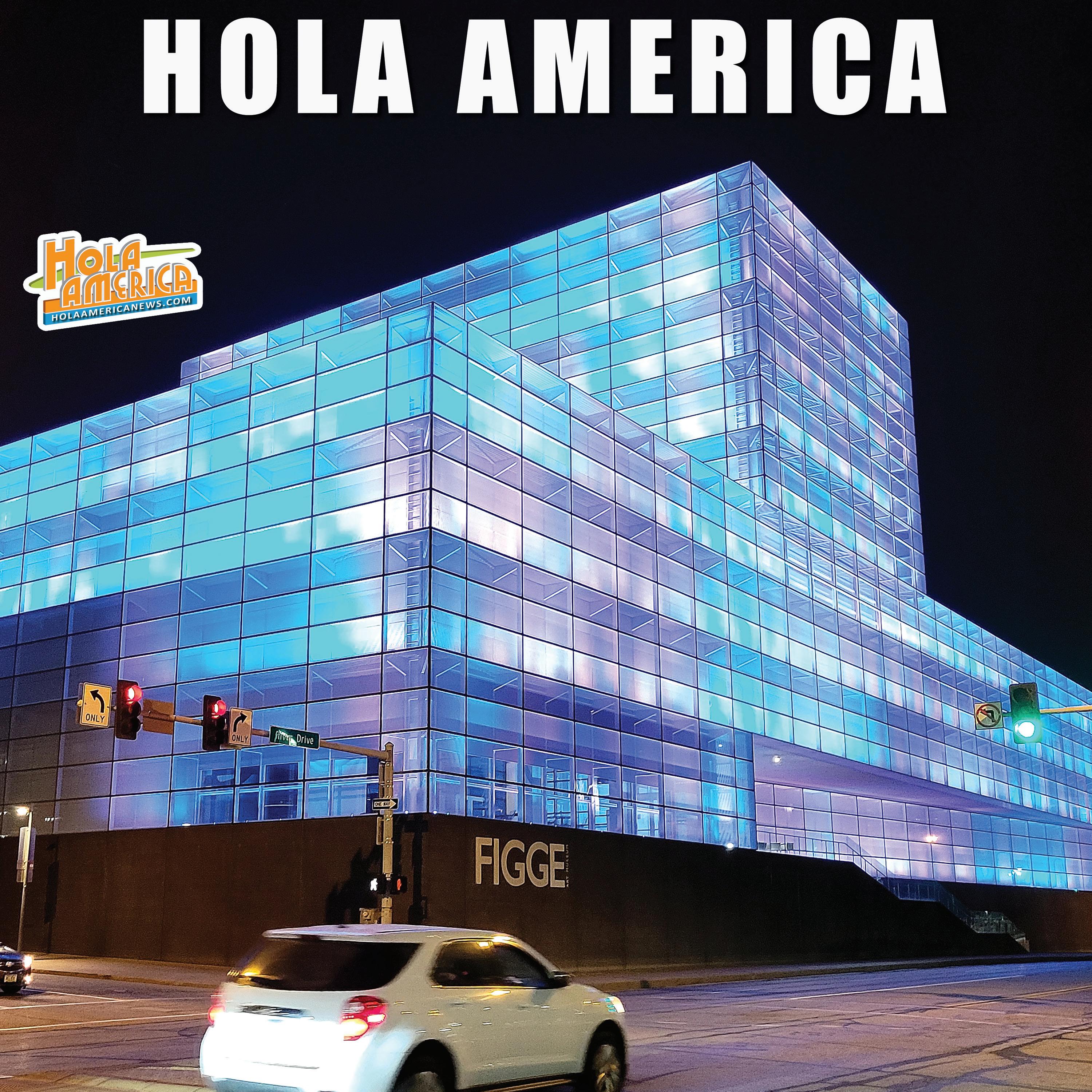



Con tasas de interés bajas, menos cargos y un servicio personalizado en su idioma, Ascentra es su mejor opción para financiar la compra de su casa.







Aceptamos el número ITIN para hipotecas

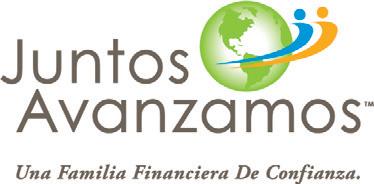

Pre-aprobaci
Pre-aprobación rápida y fácil

Servicio interno y al nivel local

Sin aumentos de tasas en hipotecas de tasa fija

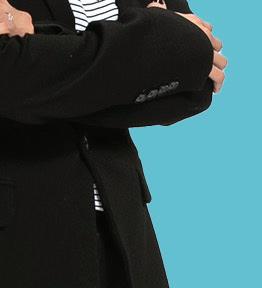



Prestamista Hipotecaria 3005 7th Street, Moline 563-459-6962 “Hablo su idioma.” comun
Raquel Gamez, NMLS# 401762

Solicite hoy mismo en ascentra.org/mortgage o comuníquese con nuestras expertas de hipotecas.




ascentra.org • 800-426-5241 Federally insured by NCUA.
Pregunte a su proveedor de la salud sobre las vacunas y las pruebas contra la hepatitis.


Por Grant Gerlock, Radio Pública de Iowa
Un sheriff del noreste de Iowa ha rechazado una oferta de llegar a un acuerdo voluntario con ICE para ayudar a hacer cumplir las leyes de inmigración.
Después de que el sheriff del condado de Dubuque, Joe Kennedy, dijera que no al ICE, dice que tuvo noticias de la Asociación Nacional de Sheriffs. El grupo dijo que el departamento del condado de Dubuque podría acabar en una lista de agencias acusadas de obstruir las leyes de inmigración.
Kennedy dijo a la junta de supervisores del condado que se requiere cierta participación con el ICE, pero que el departamento no puede disponer del personal o del espacio en la cárcel para hacer más.
“Somos un socio de su agencia. Dicho esto, no queremos entrar en un acuerdo vinculante en el que tengan la capacidad de controlar a nuestros empleados, y simplemente pensamos que eso es lo que más conviene a los residentes de nuestro condado.”
Ninoska Campos dijo a los supervisores del Condado de Dubuque en su reunión del lunes que apoya esa decisión. Campos es parte de una demanda de derechos civiles presentada contra la Patrulla Estatal de Iowa después de una detención de tráfico donde ella y otros trabajadores latinos fueron interrogados sobre su estatus migratorio. Eso fue después de que el estado acordó formar un grupo de trabajo de inmigración con ICE. Campos habló a través de un traductor.
“Instamos a la junta de supervisores a unirse al sheriff para decir no al perfil racial y no a la cooperación local con ICE”.
Otros dijeron a la junta del condado que la oficina del sheriff debería hacer todo lo posible para apoyar los objetivos de deportación de la administración Trump.
Kennedy dice que trabajará con la agencia cuando lo requiera la ley.
El Departamento de Seguridad Pública de Iowa firmó un acuerdo con ICE el mes pasado para crear un grupo de trabajo de oficiales que serían delegados para llevar a cabo la aplicación de la ley de inmigración.
By Grant Gerlock, Iowa Public Radio
A sheriff in northeast Iowa has rejected an offer to make voluntary agreements with ICE to help enforce immigration laws.
After Dubuque County Sheriff Joe Kennedy said no to ICE, he says he heard from the National Sheriffs’ Association. The group said the Dubuque County department could land on a list of agencies accused of obstructing immigration laws.
Kennedy told the county board of supervisors some participation with ICE is required, but the department cannot spare the staff or jail space to do more.
“We are a partner to their agency. Having that been said, we do not want to get into a binding agreement where they have the ability to control our employees, and we just think that that’s what’s in the best interest for our county residents.”
Ninoska Campos told the Dubuque County supervisors at their meeting Monday she supports that decision. Campos is part of a civil rights complaint filed against the Iowa State Patrol after a traffic stop where she and other Latino workers were questioned about their immigration status. That was after the state agreed to form an immigration task force with ICE. Campos spoke through a translator.
“We urge the board of supervisors to join the sheriff in saying no to racial profiling and no to local cooperation with ICE.”
Others told the county board the sheriff’s office should do anything it can to support the Trump administration’s deportation goals.
Kennedy says he will work with the agency when required by law.
The Iowa Department of Public Safety signed an agreement with ICE last month creating a task force of officers who would be deputized to carry out immigration enforcement.






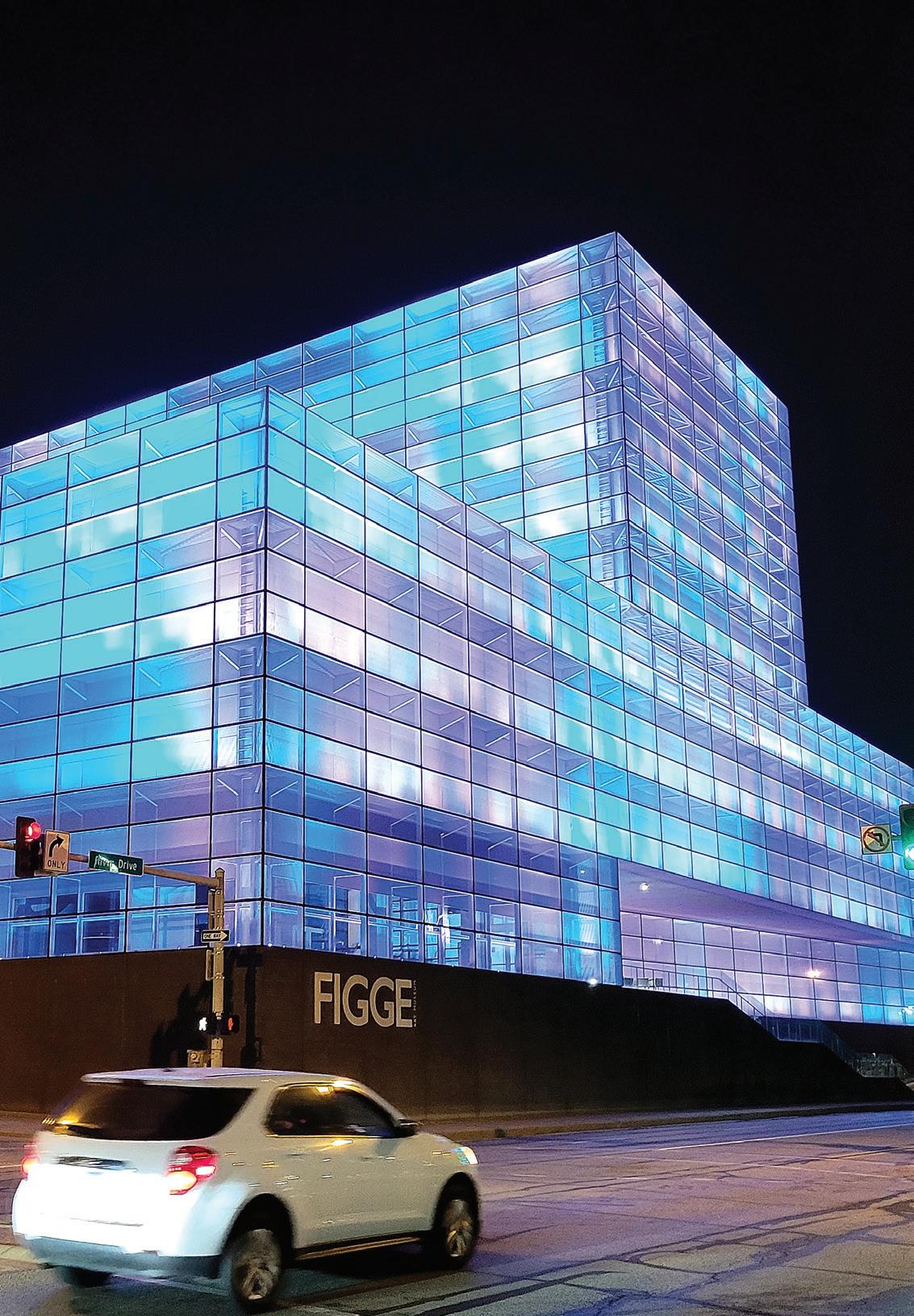
Con motivo del centenario del museo, la emblemática obra de arte pública -la mayor de la historia de Iowa y un faro para la creatividad y la cultura en el Medio Oeste-
Davenport, IA - El sábado 17 de mayo Museo de Arte Figge inauguró Evanescent Field, una exposición de arte público del artista de renombre mundial Leo Villareal que iluminará el exterior del Figge con patrones dinámicos de luz de colores a diario para el deleite de todos. Anunciado por primera vez al público en 2022, el proyecto celebra el centenario del Figge y abre un nuevo capítulo brillante para las artes y la cultura en los Quad Cities y sus alrededores. Evanescent Field es la mayor exposición de arte público jamás realizada en el estado de Iowa y una de las más significativas del Medio Oeste, y convierte al museo en un punto de referencia para toda la región. La obra maestra de Villareal, creada exclusivamente para el Museo de Arte Figge, está directamente relacionada con el entorno, el río Misisipi y la magnífica arquitectura del museo, diseñado por Sir David Chipperfield.
Leo Villareal es un artista de la luz mexicano-americano con base en Nueva York. El internacionalmente aclamado artista es conocido por sus espectaculares instalaciones de luz, entre las que se incluyen The Bay Lights en el Puente de la Bahía de San Francisco; Illuminated River, una obra de arte pública que une 9 de los puentes centrales de Londres; Multiverse, una instalación en un túnel de la Galería Nacional de Arte de Washington, D.C.; y ahora, Evanescent Field en el Figge Art Museum. Evanescent Field es la mayor
obra de arte pública de Iowa y una de las mayores de Villareal en Estados Unidos.
Con motivo de la inauguración de Evanescent Field, Villareal declaró: “Es un honor contribuir al paisaje artístico del Medio Oeste y activar este emblemático edificio de David Chipperfield. Dar vida a esta antigua visión del Figge en colaboración con un equipo increíble ha sido una experiencia fantástica. Ha sido un placer trabajar en los Quad Cities, y he tenido la oportunidad de conocer la región en muchos viajes a lo largo de los últimos 10 años. He visto de primera mano el importantísimo papel que desempeña el Figge dentro de la comunidad creativa, y me siento honrado de dar vida al edificio y de atraer a sus puertas a un público aún más numeroso.”
Recientemente, sus obras se han expuesto en la Pace Gallery de Nueva York, Ginebra, Londres y Palo Alto; el Museo de Arte de El Paso, El Paso, TX; el Centro de Arte Contemporáneo UCCA, Pekín; y el Museo Histórico Judío, Ámsterdam, Países Bajos.
Villareal utiliza código binario para crear complejas secuencias de luz mediante software personalizado y programación en el sitio que incorpora y responde al entorno del lugar. Evanescent Field está compuesto por más de 1,000 potentes luces LED a todo color, que miden 1,500 metros lineales en el exterior del edificio, y fueron especificadas, probadas y seleccionadas por Villareal y el diseñador de iluminación RDG, por sus capacidades únicas para ofrecer el efecto deseado para la obra de arte. El conjunto de luces se controla mediante un software personalizado creado Continúa en la página siguiente



Continúa de la página anterior por Villareal para activar los cuatro lados del Figge con una luz que cambia constantemente. Dado que los exuberantes y coloridos patrones de Evanescent Field son abstractos, conservan una sensación de misterio e invitan al espectador a sacar sus propias conclusiones subjetivas. La obra de Villareal explora la “evanescencia”, un concepto que se refiere a los umbrales de la percepción a medida que las ondas de luz se desvanecen constantemente, sólo para ser sustituidas por nuevas repeticiones. Villareal programa los patrones de luz para que nunca se repitan, de modo que el espectador viva una experiencia única cada vez que contempla la obra. La secuenciación se inspira en patrones y sistemas de reglas de la naturaleza, sobre todo en los ritmos del río Mississippi, ajustados a medida para conseguir el brillo y el tempo adecuados. En ocasiones, las secuencias pueden evocar nubes atmosféricas y, en otras, oscilaciones submarinas.
El proyecto de iluminar el Figge lleva 20 años gestándose; cuando el arquitecto británico Sir David Chipperfield diseñó el edificio actual del museo, la intención original tanto del arquitecto como de la comunidad era iluminar su fachada de cristal para proporcionar un resplandor etéreo por la noche. Construida en 2005, la actual sede del Figge fue uno de los primeros encargos de Chipperfield en Estados Unidos. La realización de la visión inicial de Chipper-
field para el museo será el preludio de un nuevo y brillante capítulo para la institución con motivo de su centenario. Al reflexionar sobre este momento histórico, Melissa Mohr, Directora Ejecutiva y CEO del Museo de Arte Figge, declaró: “Estamos entusiasmados con la inauguración de esta obra singular, encargada y diseñada especialmente para el museo y nuestra comunidad. Ahora que el Figge celebra su centenario, nos enorgullece presentar este regalo perdurable a los Quad Cities como una celebración de los últimos 100 años, y como un testimonio de los próximos 100 años por venideros”.
El Museo de Arte Figge se dedica a acercar el arte a las personas. Situado a orillas del río Mississippi, en el centro de Davenport, en el 225 West Second Street, el Figge es el principal centro educativo y de exposiciones de arte entre Chicago y Des Moines. Su emblemático edificio de cristal, diseñado por el arquitecto británico David Chipperfield, alberga una de las mejores colecciones de arte del Medio Oeste y presenta exposiciones de categoría mundial, clases de arte, conferencias y actos especiales que atraen a visitantes de todas las edades. El horario del museo es de 10 am a 5 pm los martes, miércoles, viernes y sábados; de 10 am a 8 pm los jueves; y de 12 pm a 5 pm los domingos. No es necesario reservar, pero puede hacerse en www.figgeartmuseum.org.
May 22, 2025





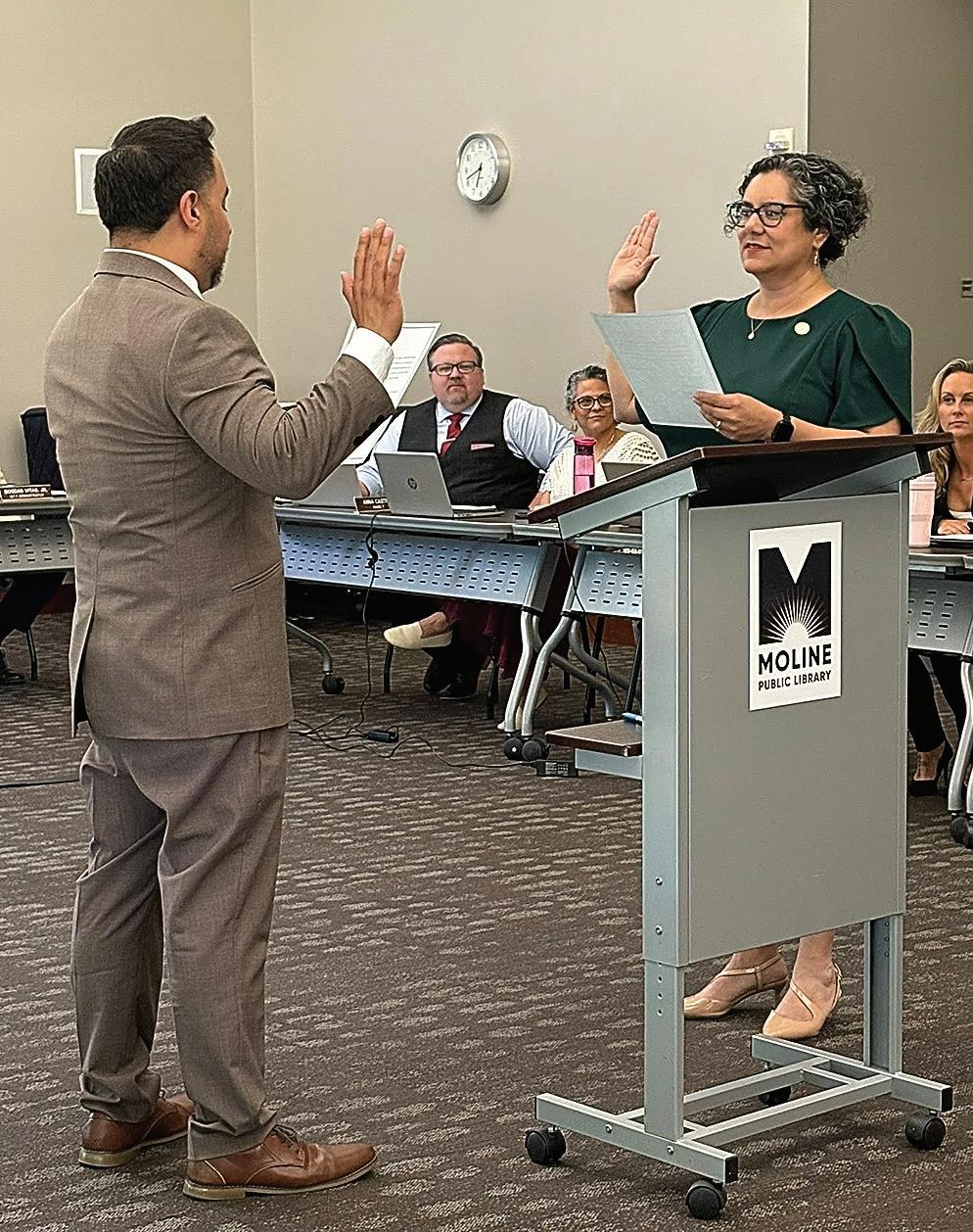
Congratulations to all the Latino elected officials who have been recently sworn in the Quad Cities Area. Pictured here counterclockwise starting from the top left: Bob Cervantes, Mayor of Silvis, IL (Photo by Wezz De La Rosa); Alvaro Macias, 2nd Ward Alderman, City of Moline; Greg Aguilar, Supervisor, South Moline Township; and Matt Hernadez, Trustee of Moline Township.
Felicitaciones a todos los funcionarios electos latinos que recientemente prestaron juramento en el área de los Quad Cities. En la foto, en sentido contrario a las agujas del reloj, comenzando desde la esquina superior izquierda: Bob Cervantes, alcalde de Silvis, Illinois; Álvaro Macías, concejal del segundo distrito de la ciudad de Moline; Greg Aguilar, supervisor del South Moline Township; y Matt Hernadez, Trustee del Moline Township.








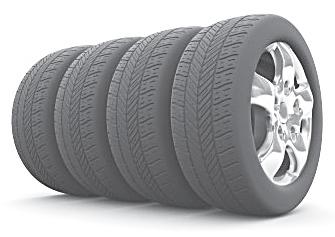




The translation for this article is on page 12

Davenport, IA – Actualmente en exhibición en el Museo de Arte Figge hasta el 8 de junio, Cara y Diego Romero: Tales of Futures Past (Cuentos de Futuros Pasados) es una muestra visualmente impactante que explora la identidad indígena, la resiliencia y la imaginación a través de los ojos de dos artistas contemporáneos aclamados. No pierda la única oportunidad de ver esta exhibición itinerante nacional en Iowa antes de que viaje al Crocker Art Museum (Sacramento, CA), al Albuquerque Museum (Albuquerque, NM) y a otras sedes hasta el verano de 2026. Esta exposición innovadora presenta 39 obras de Cara Romero (Chemehuevi) y Diego Romero (Pueblo de Cochití), marcando la primera vez que su arte se presenta conjuntamente en una gira nacional. La exhibición incluye 18 piezas de cerámica y litografías dinámicas de Diego Romero, junto con 20 poderosas fotografías de Cara Romero, incluidas obras de su aclamada serie Indigenous Futurism. Sobre la exhibición, los artistas compartieron:
“Estamos muy emocionados (y conmovidos) de tener nuestra primera exhibición conjunta que muestra cómo nuestras obras dialogan entre sí y cómo nuestras vidas artísticas se entrelazan. Disfrutamos profundamente crear juntos en esta vida y apoyarnos mutuamente. Será muy conmovedor ver nuestras obras viajar juntas.”
A través de imágenes vívidas, perspectivas personales y elementos de la cultura popular, Tales of Futures Past examina la evolución de la identidad indígena, abordando temas como el colonialismo, la herencia ancestral, la justicia ambiental y la resiliencia cultural. La exposición, organizada temáticamente, invita a los visitantes a reimaginar narrativas históricas, explorar mitologías compartidas y reflex-
ionar sobre futuros indígenas posibles.
“Esta exposición nos recuerda el poder del arte para transformar percepciones y formas de ver el mundo”, dijo Vanessa Sage, co-curadora sénior del Museo de Arte Figge. “Cara y Diego Romero nos alientan a superar los estereotipos y a conectarnos con la complejidad de la identidad indígena y con nuestra humanidad compartida.”
“Estamos profundamente agradecidos de dar vida a Tales of Futures Past,” añadió Melissa Mohr, directora ejecutiva y CEO del Figge. “La exposición revela tanto la maestría artística como los valores compartidos de Cara y Diego en cuanto a la representación indígena.”
Véala antes de que se vaya—Tales of Futures Past estará en el Museo de Arte Figge solo hasta el 8 de junio. Es su oportunidad de experimentar las obras de dos artistas visionarios antes de que esta poderosa exposición emprenda su gira nacional. Planifique su visita hoy en figgeartmuseum.org

Los artistas Cara y Diego Romero

Imagen en la página 8
Cara Romero
Arla Lucia, 2020
Impresión pigmentada de archivo
Cortesía
Imagen en la página 9
Cara Romero
Hermosa, 2021
Impresión pigmentada de archivo
Cortesía





Thank you, Muscatine community, for coming out on May 15th for the JEFAS Networking Event sponsored by Ascentra Credit Union and the Greater Quad Cities Hispanic Chamber of Commerce. It was great meeting so many Latina entrepreneurs from Muscatine coming together at The Coffee Belt to celebrate Maritza Martinez, one of the features in our latest JEFAS Magazine.
Gracias, comunidad de Muscatine, por asistir el 15 de mayo al evento de networking JEFAS, patrocinado por Ascentra Credit Union y la Cámara de Comercio Hispana de los Quad Cities. Fue un placer conocer a tantas emprendedoras latinas de Muscatine reunidas en The Coffee Belt para celebrar a Maritza Martínez, una de las historias de la más reciente revista JEFAS.



Involucrando a las mujeres en la conversación sobre el VIH.
En 2022, el 19% de los nuevos diagnósticos de VIH en EE. UU. fueron en mujeres, y el 23% de las personas que viven con VIH son mujeres.
Sin embargo, muchas veces las mujeres no se consideran en riesgo de contraer VIH y no reciben la información necesaria para prevenirlo.
Es fundamental que todas las mujeres tomen medidas para proteger su salud:
• Realízate la prueba de VIH al menos una vez en la vida.
• Infórmate y encuentra las mejores opciones de prevención del VIH para ti.
• Si vives con VIH, accede a los servicios y cuidados necesarios para proteger tu salud y la de tus parejas.




Para más información y encontrar pruebas gratis cerca de ti, visita stophiviowa.org




Con tasas de interés bajas, menos cargos y un servicio personalizado en su idioma, Ascentra es su mejor opción para financiar la compra de su casa.

3005 7th Street, Moline 563-459-6962 “Hablo su idioma.”
Aceptamos el número ITIN para hipotecas

Raquel Gamez, NMLS# 401762
Pre-aprobación rápida y fácil


Prestamista Hipotecaria

Servicio interno y al nivel local
Sin aumentos de tasas en hipotecas de tasa fija
Solicite hoy mismo en ascentra.org/mortgage o comuníquese con nuestras expertas de hipotecas.


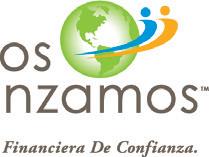




Davenport, IA – Now on view at the Figge Art Museum through June 8, Cara and Diego Romero: Tales of Futures Past is a bold and visually stunning exhibition exploring Indigenous identity, resilience, and imagination through the eyes of two celebrated contemporary artists. Don’t miss the only opportunity to see this nationally touring show in Iowa before it travels to the Crocker Art Museum (Sacramento, CA), the Albuquerque Museum (Albuquerque, NM), and additional venues through summer 2026.
This groundbreaking exhibition features 39 works by Cara Romero (Chemehuevi) and Diego Romero (Cochiti Pueblo), marking the first time their art has been shown together in a nationally traveling show. The exhibit includes 18 of Diego Romero’s dynamic pottery and lithographs alongside 20 of Cara Romero’s powerful photographic works—highlighted by pieces from her acclaimed Indigenous Futurism series.
Reflecting on the exhibit, the artists Cara and Diego Romero shared:
“We are very excited (and moved) to have our first two-person show together that illuminates ways in which our works are in conversation with each other and how our artists’ lives intertwine. We deeply enjoy creating in this life together and center our existence in art and work to support each other’s endeavors. It will be so touching to see the works travel together.”
Through vivid imagery, personal perspective, and elements of pop culture, Tales of Futures Past examines the evolving nature of Indigenous identity, grappling with themes of colonialism, ancestral legacy, environmental justice, and cultural resilience. Thematically organized, the exhibition invites viewers to reimagine historical narratives, explore shared mythologies, and consider what Indigenous futures can
look like.
“This exhibition is a reminder of the power of art to reshape perceptions and worldviews,” said Vanessa Sage, CoSenior Curator at the Figge Art Museum.
“Cara and Diego Romero encourage us to move past surface stereotypes and engage with the complexity of Indigenous identity while embracing our shared humanity.”
“We are profoundly grateful to bring Tales of Futures Past to life,” added Melissa Mohr, Executive Director and CEO of the Figge. “This exhibition reveals both the artistry and the shared values that Cara and Diego have for Indigenous representation.”
Experience it while you can—Tales of Futures Past is only at the Figge Art Museum through June 8. This is your chance to see the works of two groundbreaking artists before the exhibition embarks on its national tour. Plan your visit today at figgeartmuseum.org and be part of a powerful conversation at the intersection of culture, history, and future vision.







Marking the museum’s Centennial, the landmark public art installation—the largest-ever in Iowa and a beacon for creativity and culture in the Midwest—
Davenport, IA - On Saturday, May 17th, the Figge Art Museum held a community-wide celebration to unveil Evanescent Field, a public art installation by world-renowned artist Leo Villareal that will illuminate the Figge’s exterior with dynamic patterns of colorful light year-round for all to enjoy. First announced to the public in 2022, the commission celebrates the Figge’s Centennial year and ushers in a bright new chapter for arts and culture in the Quad Cities and beyond. Evanescent Field is the largest-ever public art installation in the State of Iowa, and one of the most significant in the Midwest, establishing the museum as a landmark for the entire region. Villareal’s site-specific masterpiece, created exclusively for the Figge Art Museum, directly engages with the surrounding environment, the Mississippi River, and the museum’s magnificent architecture, designed by Sir David Chipperfield.
Leo Villareal is a Mexican American light artist based in New York City. The Internationally acclaimed artist is known for his site-specific light installations, including The Bay Lights on San Francisco’s Bay Bridge; Illuminated River, a public artwork that unites 9 of London’s central bridges; Multiverse, a tunnel installation at the National Gallery of Art in Washington, D.C.; and now, Evanescent Field at the Figge Art Museum. Evanescent Field is the
largest public artwork in Iowa, and one of Villareal’s largest works in the United States.
On the occasion of Evanescent Field’s unveiling, Villareal stated, “It’s an honor to make a contribution to the artistic landscape of the Midwest, and to activate this iconic building by David Chipperfield. Bringing this longstanding vision of the Figge to life in collaboration with an amazing team has been a fantastic experience. It has been a pleasure working in the Quad Cities, and I’ve had an opportunity to get to know the region over many trips over the last 10 years. I have seen first-hand the important role the Figge plays within the creative community, and I am honored to bring the building to life and to bring even larger audiences to its doors.”
Recently his work has been exhibited at Pace Gallery in New York, Geneva, London, and Palo Alto; the El Paso Museum of Art, El Paso, TX; UCCA Center for Contemporary Art, Beijing; and the Jewish Historical Museum, Amsterdam, Netherlands.
Villareal uses binary code to create complex light sequences through custom software and on-site programming that incorporates and responds to a site’s environment. Evanescent Field is comprised of over 1,000 powerful full-color LED lights, which measure 5,000 linear feet on the exterior of the building, and were specified, tested, and selected by Villareal and lighting designer RDG, for their unique capabilities to deliver the desired effect for the artwork. The light array is controlled by custom software

created by Villareal to activate all four sides of the Figge in a constantly changing light. Because the lush and colorful patterns of Evanescent Field are abstract, they preserve a sense of mystery and invite viewers to come to their own subjective conclusions. Villareal’s artwork explores “evanescence,” a concept that refers to the thresholds of perception as waves of light constantly melt away, only to be replaced by further iterations. Villareal programs the light patterns such that they never repeat, so viewers have a unique experience each and every time they view the work. Inspiration for the sequencing comes from patterns and systems of rules in nature, particularly the rhythms of the Mississippi River, custom-tuned to be just the right brightness and tempo. At times, the sequences might evoke atmospheric clouds, and at others, underwater oscillations.
The project of lighting the Figge is 20 years in the making; when British architect Sir David Chipperfield designed the museum’s current building, the original intent of both the architect and the community was to illuminate its glass façade to provide an ethereal glow at night. Built in 2005, the Figge’s current home was one of Chipperfield’s first commissions in the United States. The realization of Chipperfield’s initial vision for the museum will herald a bright new chapter for the institution on the occasion of its 100th anniversary.
Reflecting on this landmark moment, Melissa Mohr, Executive Director and CEO of the Figge Art Museum, said, “We are thrilled to have unveiled this singular work, specially commissioned and designed for the museum and our community. As the Figge marks its Centennial, we proudly present this enduring gift to the Quad Cities as a celebration of the last 100 years, and as a testament to the next 100 years to come.”
The Figge Art Museum is dedicated to bringing art and people together. Located on the Mississippi River in downtown Davenport at 225 West Second Street, the Figge is the premier art exhibition and education facility between Chicago and Des Moines. Its landmark glass building, designed by British architect David Chipperfield, is home to one of the Midwest’s finest art collections and presents world-class exhibitions, art classes, lectures, and special events that attract visitors of all ages.
Museum hours are 10 a.m.-5 p.m. Tuesday, Wednesday, Friday, and Saturday; 10 a.m.-8 p.m. on Thursdays; and 12-5 p.m. on Sundays. Reservations are not required, but can be made at www.figgeartmuseum.org



“We are thrilled to have unveiled this singular work, specially commissioned and designed for the museum and our community. As the Figge marks its Centennial, we proudly present this enduring gift to the Quad Cities as a celebration of the last 100 years, and as a testament to the next 100 years to come.”

- Melissa Mohr, Executive Director and CEO of the Figge Art Museum
